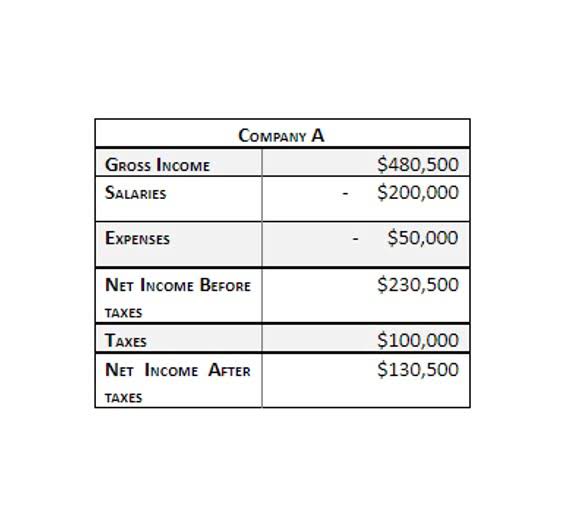
Below are some methods of calculating the cost of inventory that are valuable for retail accounting. At its most basic, retail accounting petty cash counts the cost of inventory relative to the selling price. Retail accounting is an inventory valuation method that allows you to estimate your inventory value assuming prices are the same across units. The IRS allows you to use any method you want to value your inventory for tax purposes. The caveat is, once you choose a method you have to stick with it, unless you get permission from the IRS to change your costing method. This rule is in place to keep business owners from “gaming the system” by frequently switching costing methods to get the best tax advantages.

Human Resources Management
The retail method can also help you keep account of the goods you’re buying or selling, know how much is left over, and maintain the right amount of inventory at all times. Each type of fiber costs a different amount, and certain knitting needles are more expensive than others. However, you have chosen to use a keystone retail accounting markup strategy, so you know you have a 50% markup on all items, regardless of what they are. LIFO inventory costing is essentially the reverse of FIFO inventory costing.
- While it saves time by avoiding manual counting, retail accounting may offer less precise numbers compared to manual methods.
- Managerial accounting is crucial for understanding the operations of a business.
- Retailers across various industries, such as clothing stores, supermarkets, and department stores, commonly use this method.
- It also handles large volumes of inventory, making it easier for retailers to manage it without tracking each item’s specific cost.
- The inventory costing method you use should be in line with your business objectives, just as the instruments you use should.
- The final step in the accounting cycle for a retail store is balancing the books.
Advantages and disadvantages of retail accounting

Next, value your closing inventory by subtractingthe cost of goods sold from the cost of goods available for sale. You use a predetermined cost-to-sales percentage because with the retail accounting method, you assume that all your inventory items have the same profit margin. The previous four inventory costing methods value inventory based on the cost to acquire the inventory.
What Is Retail Accounting? A Guide to the Retail Method of Accounting
One of the key challenges of running a retail business is tracking inventory, especially if you buy multiple inventory units that don’t all cost the same amount. If this is the case, you need to figure out a way to assume the cost of goods sold so that you can compare this to your ending inventory and calculate your profit. Note that this method does not track the physical movement of goods sold but rather assigns cost to the inventory, so you can determine your profit later. In other words, retail accounting is a way of tracking inventory costs that is especially simplified compared to the other available methods.

- It is suggested to almost all the big companies to maintain the records perfectly.
- Imagine a busy clothing store where employees need to process new shipments quickly.
- We offer an extensive library of learning materials, including interactive flashcards, comprehensive textbook solutions, and detailed explanations.
- Sign up to receive more well-researched small business articles and topics in your inbox, personalized for you.
- Let’s assume you took a physical inventory count at the beginning of the quarter, and you know the actual cost of your inventory as of that date was $80,000.
Ending inventory at retail multiplied by the cost to retail ratio will give us the estimated ending inventory at cost. In this guide, we’ll go over what the retail inventory method is, how to use it, and why it can be beneficial to your business. When you know how to use the RIM, it’ll be much easier to understand your cost of inventory and the retail value of goods that your business has. This software updates stock levels as sales are made or new shipments arrive.
How do I keep track of the inventory on hand?
- This method is based on the relationship between the cost of merchandise and its retail price.
- Understanding retail accounting is critical to managing your inventory effectively, and using the right methods and strategies can make all the difference.
- Actual COGS is very difficult to track and calculate, whereas sales is easy.
- After almost a decade of experience in public accounting, he created MyAccountingCourse.com to help people learn accounting & finance, pass the CPA exam, and start their career.
- By month’s end, you’re overwhelmed and uncertain which expenses tie to which job.
This equation will give us the ratioof how much we paid for the inventory compared with how much we will be able to sell it to customers. In reality, a company using the RIM would likely have a much larger inventory of products. If the milk stock drops below a certain quantity—say, 50 cartons—the inventory management system automatically triggers a reorder with the supplier.
Inventory’s impact on profitability
Shaun Conrad is a Certified Public HVAC Bookkeeping Accountant and CPA exam expert with a passion for teaching. After almost a decade of experience in public accounting, he created MyAccountingCourse.com to help people learn accounting & finance, pass the CPA exam, and start their career. Synder simplifies the reconciliation process, making sure all your financial data matches up correctly. As all the numbers used here are retail values, the closing inventory of 40,000 is also at retail value.
Understanding the Retail Inventory Method
Under LIFO, when you sell a box of nails, you record the cost of that box as $6 first, assuming you’re selling the newest, more expensive inventory. The retail method of accounting is a method accountants use to value closing inventory by estimating its value. Retail accounting can feel like a daunting task, particularly if financial reporting isn’t your forte. Luckily, Shopify has the tools you need to master accounting—which is made possible by unifying your most important data into a central business brain. In December 2022, U.S. businesses saw a positive 0.3% uptick in their inventories, reflecting an accumulation of goods available for sale. When viewed year-over-year, inventories experienced a substantial surge, reaching 12.7%.
